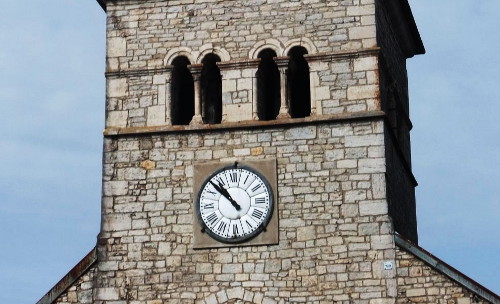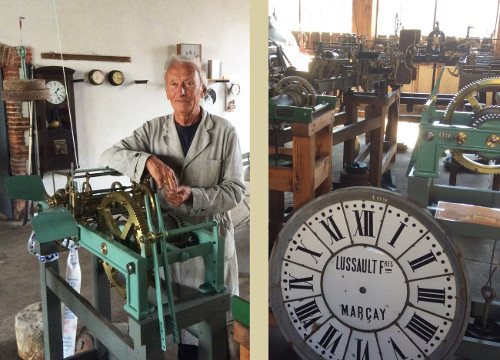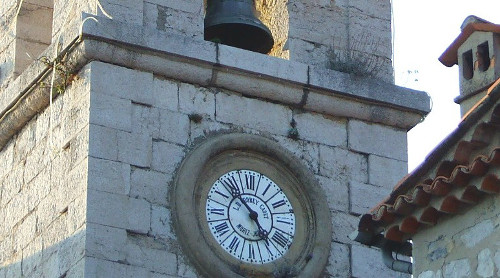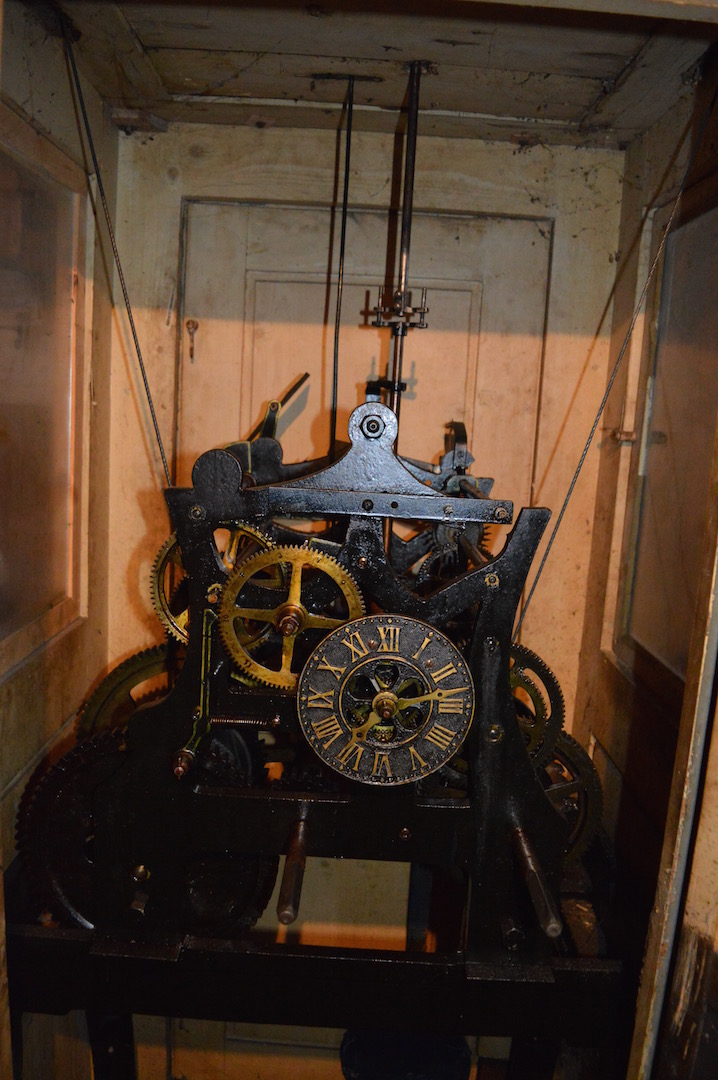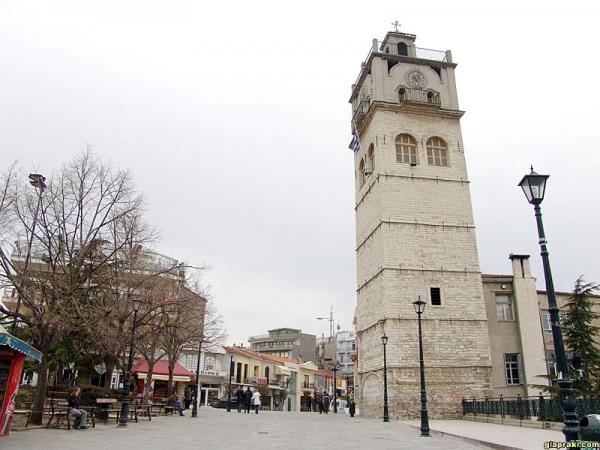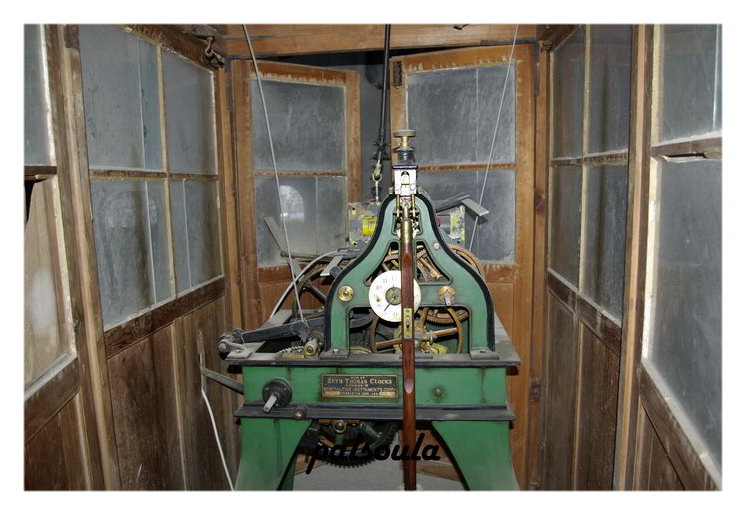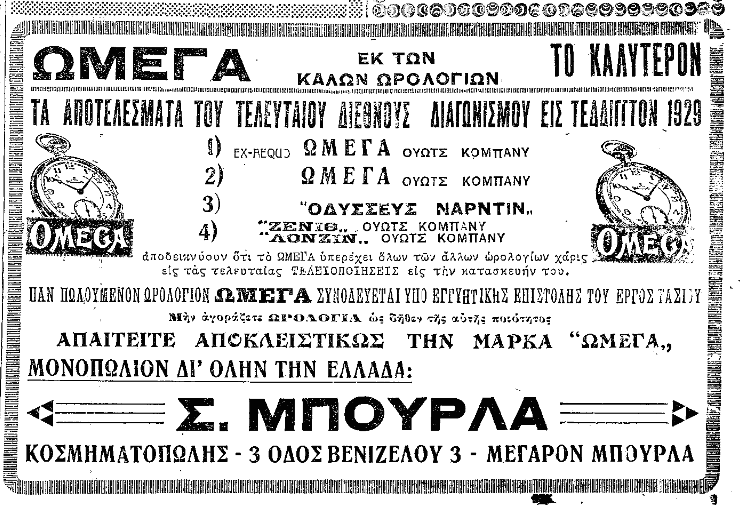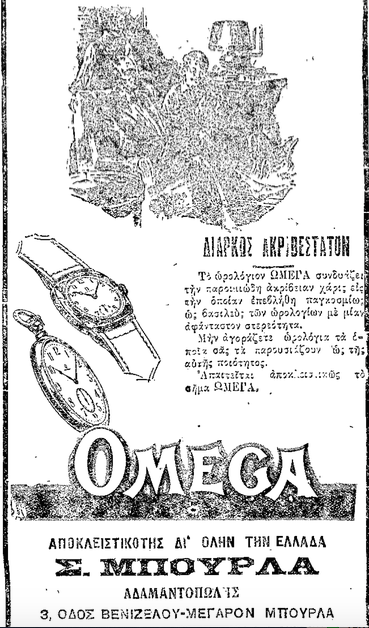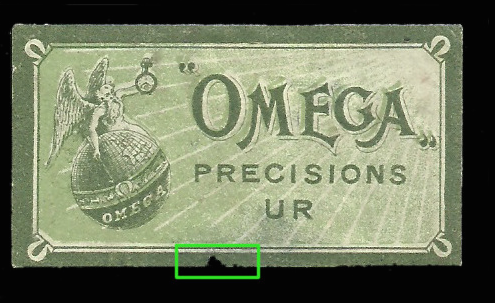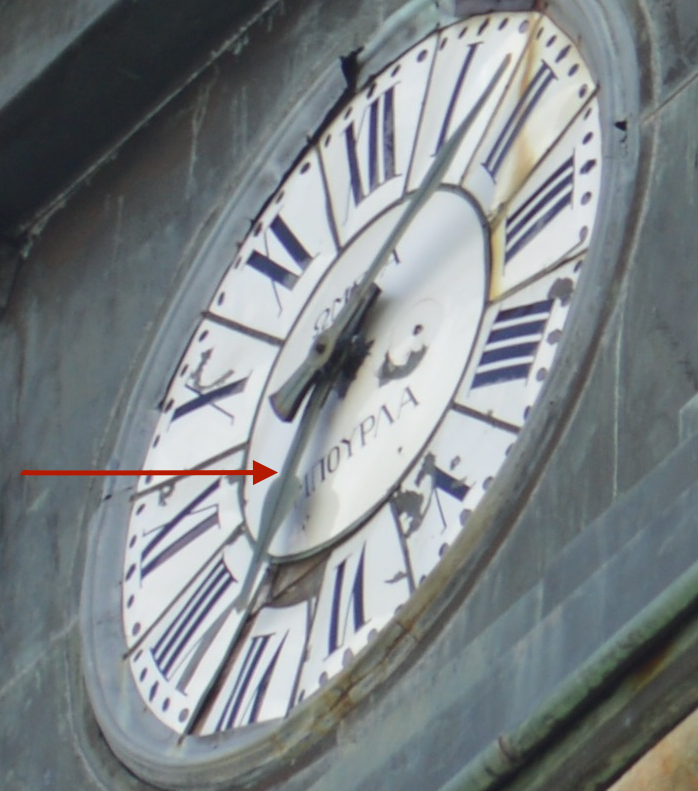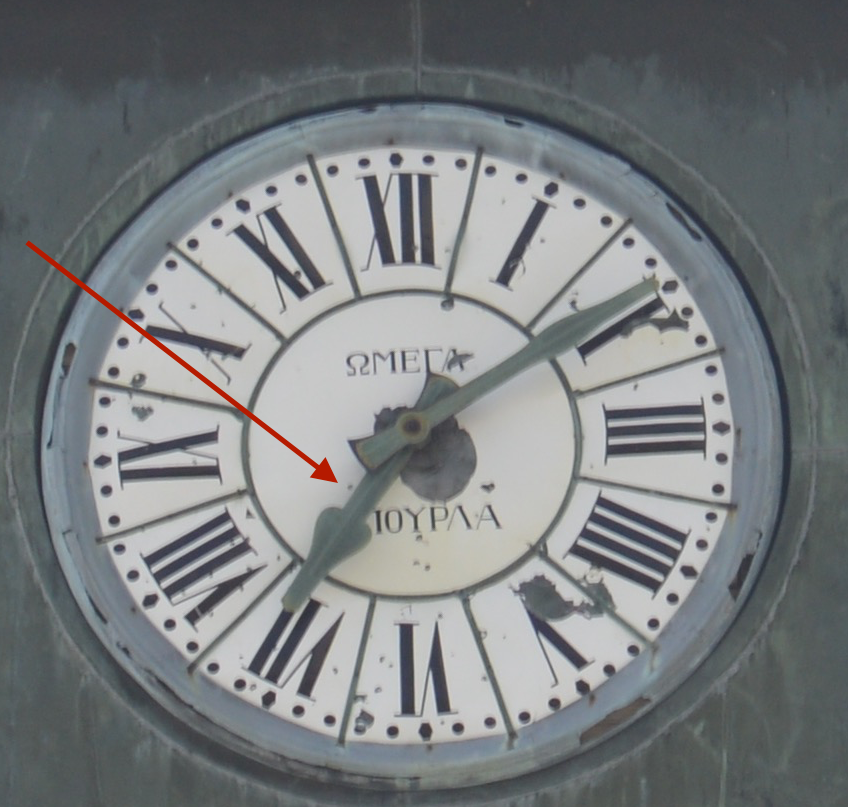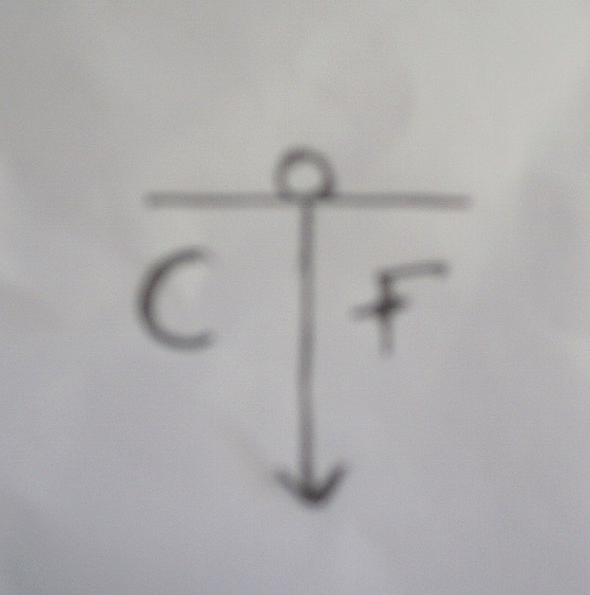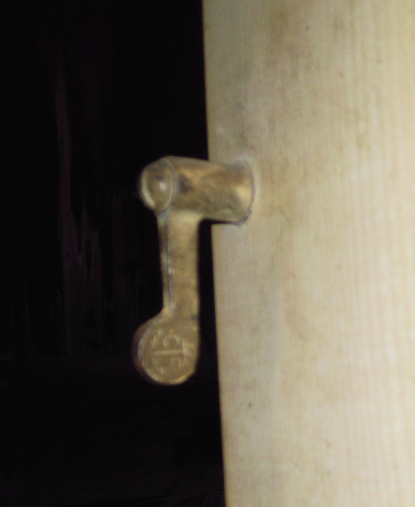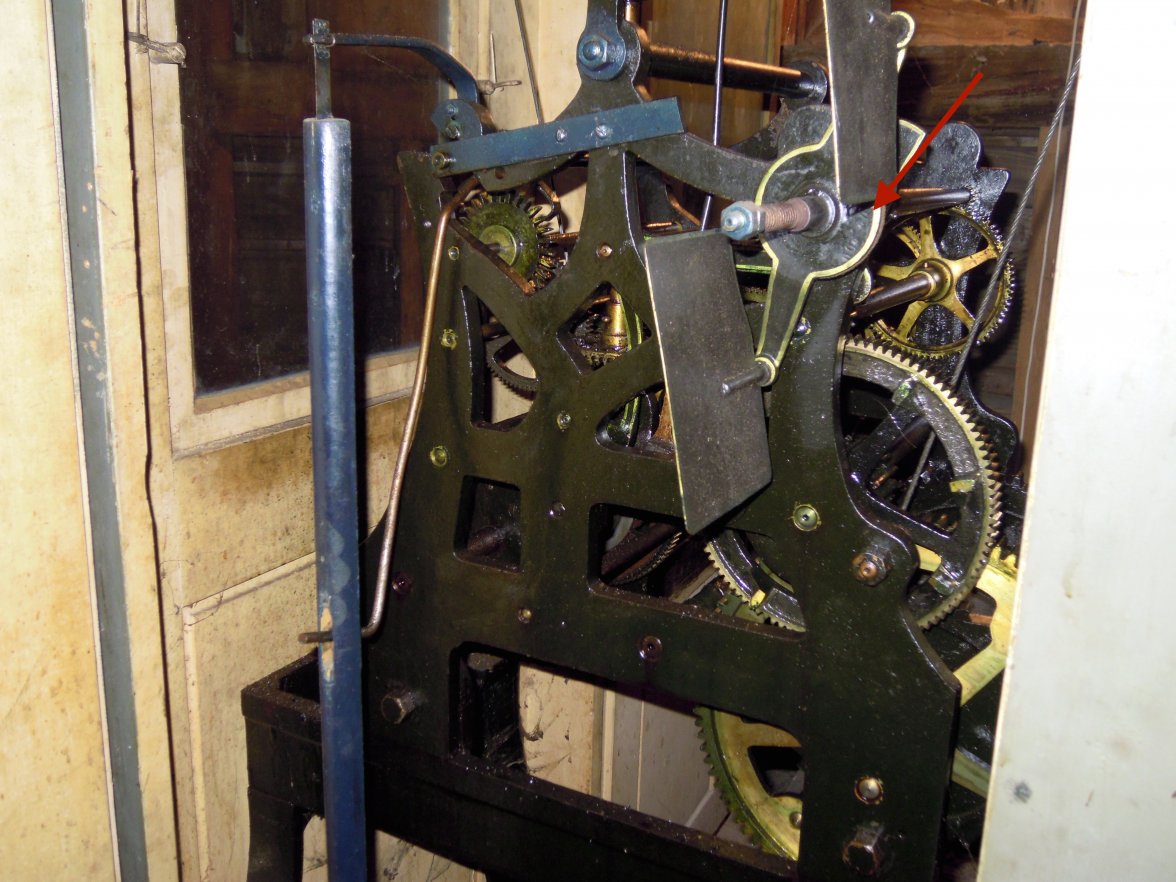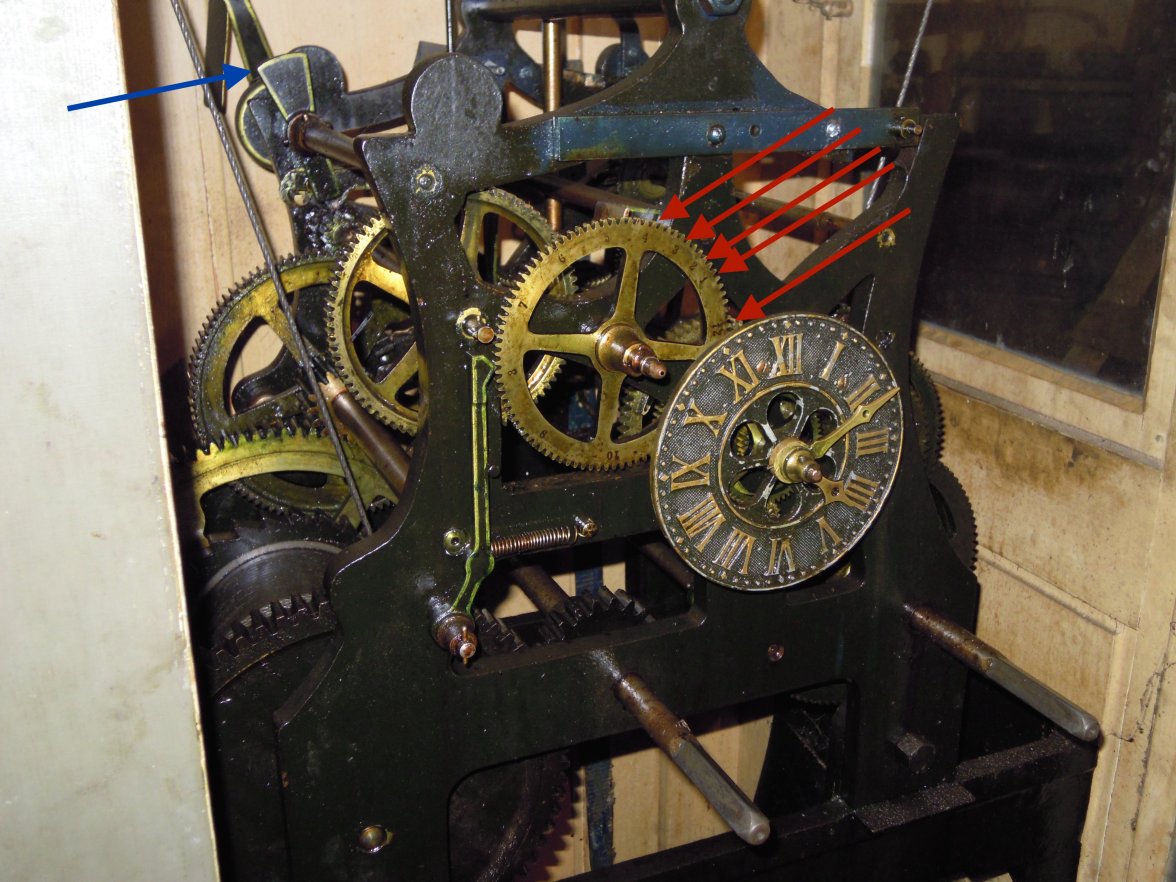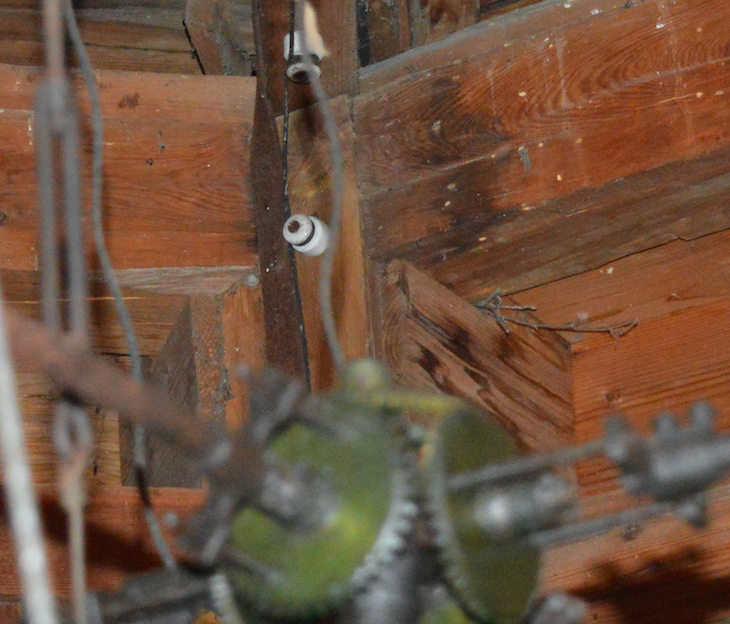The curious story of an Omega Tower Clock 1928 in a remote village in Greece
489G
·Allow me to publicly thank Mr. Michel Viredaz, Vice-President and redactor of Chronométrophilia (www.chronometrophilia.ch), a Swiss association of clocks and watches collectors, for his invaluable help and leads, through friends and associates.
Through his help, expertise and comments and through the help and expertise of all of you, I am now much closer to solving the mystery.
Through his help, expertise and comments and through the help and expertise of all of you, I am now much closer to solving the mystery.
JimInOz
··Melbourne Australia🍿
489G
·We are getting closer to identifying the faces. Typical of Jura, France. Most are made by Odobey L. D. (horloger) ; Cadet (horloger) or their successors Terraillon-Petitjean. And I am being told by Mr. M. Viredaz that: The faces (dials) on the tower are typically French. They are called Treize Pièce (i.e. 13 pieces or 25 with minutes) also for home clocks (Morez/Morbier/Comtoise clocks) because it was difficult to make large enamel dials, they made 12 "cartouches" for the numbers + one for the center. Also easier to transport!
So, it's not improbable that the faces did come from France or Switzerland to the little mountain village!
Also the dates seem to fit.
"Le clocher de l’église de Clairvaux-les-Lacs, dans le département du Jura, a été réhabilité en 2012. L’horloge fabriquée en 1925 par l’entreprise Terraillon-Petitjean (successeur de l'entreprise Paul Odobey Fils de Morez)", from http://www.horlogerie-comtoise.fr/
Now we need to identify the mechanism (I am reading it was NOT unusual not to have identifying marks or plaques). Can someone help with identifying the actual clock, hopefully from the front dial?
So, it's not improbable that the faces did come from France or Switzerland to the little mountain village!
Also the dates seem to fit.
"Le clocher de l’église de Clairvaux-les-Lacs, dans le département du Jura, a été réhabilité en 2012. L’horloge fabriquée en 1925 par l’entreprise Terraillon-Petitjean (successeur de l'entreprise Paul Odobey Fils de Morez)", from http://www.horlogerie-comtoise.fr/
Now we need to identify the mechanism (I am reading it was NOT unusual not to have identifying marks or plaques). Can someone help with identifying the actual clock, hopefully from the front dial?
489G
·Quite possibly the best use of this emoticon evar...
The four of us couldn't stop laughing. Well done JimInOz (again!)
489G
·As we are slowly moving into new, exciting territory, hoping to solve the mystery, here is what another French expert had to say (I hope informative for everyone, not just for me who is learning a lot every day). The following is slightly edited:
"There are three things to consider :
1- The dial type and dial maker
2- The clock mechanism itself and its maker
3- The installer of the clock and the dial
So, in more detail:
1- The dial : indeed it is quite similar to the ones sold by Odobey and other clock makers of the French Jura. However, it is a very common shape, used by a number of other clock producers from roughly 1850 to 1950 and found all over France. In other words, you cannot infer that the dial was made by Odobey, as it was too common in France at the time. In addition, the dial maker was usually not the clock maker himself. Dials were produced by specialized small companies and resold by the clock makers.
2- The clock mechanism: it is definitely not a French clock maker who made this clock. Most likely a German one (or from a part of Switzerland or the Netherlands). Anyways, not an Odobey Clock.
3- The names on the dial : Many possibilities here... In France, in most of the cases, it is the name of the installer of the clock. In some cases, it is the name of the person who paid for the clock. In some other cases, it is the name of the clock mechanism maker.
4- Bourla : I don't have this name in my files and it is not a French clockmaker.
So, venturing a hypothesis: Omega might be the name of the clock maker (but did Omega built such tower clocks?) and Bourla might be the name of the local installer."
So, to sum up again:
A. We now know for a fact that Bourla was the local representative of Omega. Are we right to surmise that he also installed the clock? If he did install it he had every right to put his name on the dials. But why on earth did he also put ΩΜΕΓΑ on the dial if the clock was not an OMEGA? And why not write it as the company was actually called, i.e. OMEGA?
B. We still do not know who made the clock. Looks German or Swiss or Dutch.
C. We cannot pinpoint the place where the face/dial was made because it was a much too common type all over France. But it looks French.
Please share your ideas, knowledge and thoughts, as this is helping move the matter forward!
I can also report that I am hopeful to provide more information dating to the actual transaction of the purchase of clock and bell shortly.
So stay tuned (and help!)!
"There are three things to consider :
1- The dial type and dial maker
2- The clock mechanism itself and its maker
3- The installer of the clock and the dial
So, in more detail:
1- The dial : indeed it is quite similar to the ones sold by Odobey and other clock makers of the French Jura. However, it is a very common shape, used by a number of other clock producers from roughly 1850 to 1950 and found all over France. In other words, you cannot infer that the dial was made by Odobey, as it was too common in France at the time. In addition, the dial maker was usually not the clock maker himself. Dials were produced by specialized small companies and resold by the clock makers.
2- The clock mechanism: it is definitely not a French clock maker who made this clock. Most likely a German one (or from a part of Switzerland or the Netherlands). Anyways, not an Odobey Clock.
3- The names on the dial : Many possibilities here... In France, in most of the cases, it is the name of the installer of the clock. In some cases, it is the name of the person who paid for the clock. In some other cases, it is the name of the clock mechanism maker.
4- Bourla : I don't have this name in my files and it is not a French clockmaker.
So, venturing a hypothesis: Omega might be the name of the clock maker (but did Omega built such tower clocks?) and Bourla might be the name of the local installer."
So, to sum up again:
A. We now know for a fact that Bourla was the local representative of Omega. Are we right to surmise that he also installed the clock? If he did install it he had every right to put his name on the dials. But why on earth did he also put ΩΜΕΓΑ on the dial if the clock was not an OMEGA? And why not write it as the company was actually called, i.e. OMEGA?
B. We still do not know who made the clock. Looks German or Swiss or Dutch.
C. We cannot pinpoint the place where the face/dial was made because it was a much too common type all over France. But it looks French.
Please share your ideas, knowledge and thoughts, as this is helping move the matter forward!
I can also report that I am hopeful to provide more information dating to the actual transaction of the purchase of clock and bell shortly.
So stay tuned (and help!)!
Edited:
lando
·But why on earth did he also put ΩΜΕΓΑ on the dial if the clock was not an OMEGA? And why not write it as the company was actually called, i.e. OMEGA?
As he was the local Omega represantative it could have been for marketing reasons. Written in greek it would have been easier for the locals to read or maybe he asked Omega to put "OMEGA" on there, but they refused to use it this way, as it was no Omega clock.
Pure speculation from my side, of course.
Edited:
489G
·As he was the local Omega represantative it could have been for marketing reasons. Written in greek it would have been easier to for the locals to read or maybe he asked Omega to put "OMEGA" on there, but they refused to use it this way, as it was no Omega clock.
Pure speculation from my side, of course.
All seem plausible. Thanks lando!
489G
·Let me speculate too, a wild guess, an imaginary dialogue between Jean Nicou and a certain salesperson in Switzerland:
Say you are a very very wealthy tobacco merchand in Sweden in 1928. You want to spend 10,000 gold pounds to build a school in your native, remote mountain village in Greece, the place you left pennyless 30 years before. You want it to have a clock tower. You want everything to be top quality. Where would you go for the clock? "Switzerland", I say. And to whom exactly? One of the best watch companies of the time. "Omega".
So, you contact Omega, and tell them you want to build a clock tower:
"Sorry", they say. "We do not make tower clocks".
-"I am willing to pay top dollar", says the magnate. "And buy 10 more clocks for my school's classrooms".
"Well..." says the imaginary Omega salesperson, "we c o u l d refer you to our Omega representative in Greece and he will help you get your clock from one of our good clock maker friends in [France] [Switzerland] [Germany] [the Netherlands] [Sweden]. And we will throw in a magnificent bell, manufactured by our good friends, the Ruetschi AG in Aarau, just 80 km down the road from Biel." "And we will call our good neighbours in the Jura to make the dials, which we will ship to you in a crate that reads "Fragile".
"That's great", says the magnate, reaching for his very fat wallet. "I'll even put your name on the clock"
"Hem...We couldn't do that, Mr. Nicou", says the salesperson. "Omega does not make tower clocks. What would people say?"
"But, if you insist...", says the salesperson rather anxiously sensing a hesitation from the part of the magnate to open his wallet, "and since you are also buying ten spendid Omega clocks, we would not object terribly if the Omega name appears in Greek in your clock tower. But no logo please".
Hence, an Omega sign in Greek, ten Omega clocks in the classrooms, the Omega representative's (and possibly installer's) name on the face of the clock, a clock mechanism made not by Omega, a clock bell made by a Swiss company located just a few km down the road from Biel/Bienne, the clocks dials/faces made somewhere in the Jura, all consistent with the oral tradition of the villagers of Nymfaio and the facts on the ground.
A wild guess...
Say you are a very very wealthy tobacco merchand in Sweden in 1928. You want to spend 10,000 gold pounds to build a school in your native, remote mountain village in Greece, the place you left pennyless 30 years before. You want it to have a clock tower. You want everything to be top quality. Where would you go for the clock? "Switzerland", I say. And to whom exactly? One of the best watch companies of the time. "Omega".
So, you contact Omega, and tell them you want to build a clock tower:
"Sorry", they say. "We do not make tower clocks".
-"I am willing to pay top dollar", says the magnate. "And buy 10 more clocks for my school's classrooms".
"Well..." says the imaginary Omega salesperson, "we c o u l d refer you to our Omega representative in Greece and he will help you get your clock from one of our good clock maker friends in [France] [Switzerland] [Germany] [the Netherlands] [Sweden]. And we will throw in a magnificent bell, manufactured by our good friends, the Ruetschi AG in Aarau, just 80 km down the road from Biel." "And we will call our good neighbours in the Jura to make the dials, which we will ship to you in a crate that reads "Fragile".
"That's great", says the magnate, reaching for his very fat wallet. "I'll even put your name on the clock"
"Hem...We couldn't do that, Mr. Nicou", says the salesperson. "Omega does not make tower clocks. What would people say?"
"But, if you insist...", says the salesperson rather anxiously sensing a hesitation from the part of the magnate to open his wallet, "and since you are also buying ten spendid Omega clocks, we would not object terribly if the Omega name appears in Greek in your clock tower. But no logo please".
Hence, an Omega sign in Greek, ten Omega clocks in the classrooms, the Omega representative's (and possibly installer's) name on the face of the clock, a clock mechanism made not by Omega, a clock bell made by a Swiss company located just a few km down the road from Biel/Bienne, the clocks dials/faces made somewhere in the Jura, all consistent with the oral tradition of the villagers of Nymfaio and the facts on the ground.
A wild guess...
Edited:
489G
·What's all this, with tower clocks and Greeks? We're known for ouzo, sun and avoiding taxes...
A little side story, a photo of the tower clock in the nearby town of Kozani, just 45 km from the village of Nymfaion, first set in operation on January 1, 1940. Photo from http://palsoula.blogspot.gr/2015/11/blog-post.html
It's a US-made Seth Thomas clock, a subsidiary of General Time Instruments Corporation http://www.clockguy.com/SiteRelated/SiteReferencePages/SethThomasHistory.html
As in the case of Nymfaion, the clock tower and clock were a gift from a native son of the town, this one having made his fortune in the US.
Why am I writing this? Because the Nymfaio clock was modified in 1968 and the town people remember some 'tower clock' guy from Kozani repairing it. Voila! The clock tower of Kozani (photo from wikimapia.org).
A little side story, a photo of the tower clock in the nearby town of Kozani, just 45 km from the village of Nymfaion, first set in operation on January 1, 1940. Photo from http://palsoula.blogspot.gr/2015/11/blog-post.html
It's a US-made Seth Thomas clock, a subsidiary of General Time Instruments Corporation http://www.clockguy.com/SiteRelated/SiteReferencePages/SethThomasHistory.html
As in the case of Nymfaion, the clock tower and clock were a gift from a native son of the town, this one having made his fortune in the US.
Why am I writing this? Because the Nymfaio clock was modified in 1968 and the town people remember some 'tower clock' guy from Kozani repairing it. Voila! The clock tower of Kozani (photo from wikimapia.org).
Edited:
489G
·I am being assisted in my quest for answers by a very helpful expert from http://www.horloge-edifice.fr/
Here are some of his thoughts to a number of my questions (slightly edited):
- Any chance that the clock could be Swedish?
Yes, that's possible. I am not familiar with the Swedish clock makers nor industry, so I can't make a reliable statement on that, but that's a possibility.
- Why did Bourla put his name on the dial? Was he the installer?
The most realistic hypothesis at this point is the following : Bourla was a local clock and watch reseller and installer. In particular, he was reselling Omega watches. He installed the turret clock in Nymfaion. The Nymfaion clock, bell and dial was imported by Bourla from various European manufacturers he was in contact with. He put his name on the dial as well as the name Omega, as a kind of advertisement, as he was reselling Omega watches. However, the Nymfaion clock is not from Omega, nor from Bourla himself who just installed the whole thing. This hypothesis is very realistic when I see how turret clocks have been installed in France and in other countries. Installers are very often the local watch resellers and install the turret clock in the local church as a key way to get reputation and identity. They put their name on the turret clock dial as a consequence, although none of the turret clock componants are manufactured by them.
- How exactly do you convert an electric tower clock (with weights) which runs on batteries to a mechanical tower clock (with the same weights) which runs by means of a pendulum?
At that time, "electric" clock means that the weights are automatically rewound using electricity. In other words, instead of having to go in the turret every day to rewind the weights, it is done automatically and electrically. Example : http://www.horloge-edifice.fr/images/Documents/F0056-Terraillon-Horl1.jpg In other words, at that time, an electric clock still uses a pendulum. It is still mechanical in that sense, except for rewinding the weights.
Here are some of his thoughts to a number of my questions (slightly edited):
- Any chance that the clock could be Swedish?
Yes, that's possible. I am not familiar with the Swedish clock makers nor industry, so I can't make a reliable statement on that, but that's a possibility.
- Why did Bourla put his name on the dial? Was he the installer?
The most realistic hypothesis at this point is the following : Bourla was a local clock and watch reseller and installer. In particular, he was reselling Omega watches. He installed the turret clock in Nymfaion. The Nymfaion clock, bell and dial was imported by Bourla from various European manufacturers he was in contact with. He put his name on the dial as well as the name Omega, as a kind of advertisement, as he was reselling Omega watches. However, the Nymfaion clock is not from Omega, nor from Bourla himself who just installed the whole thing. This hypothesis is very realistic when I see how turret clocks have been installed in France and in other countries. Installers are very often the local watch resellers and install the turret clock in the local church as a key way to get reputation and identity. They put their name on the turret clock dial as a consequence, although none of the turret clock componants are manufactured by them.
- How exactly do you convert an electric tower clock (with weights) which runs on batteries to a mechanical tower clock (with the same weights) which runs by means of a pendulum?
At that time, "electric" clock means that the weights are automatically rewound using electricity. In other words, instead of having to go in the turret every day to rewind the weights, it is done automatically and electrically. Example : http://www.horloge-edifice.fr/images/Documents/F0056-Terraillon-Horl1.jpg In other words, at that time, an electric clock still uses a pendulum. It is still mechanical in that sense, except for rewinding the weights.
Edited:
489G
·Following the very interesting lead and confirmation from an expert in Switzerland that the BOURLA (ΜΠΟΥΡΛΑ in Greek) name which appears on the four faces of the tower clock was in fact the name of the OMEGA representative in the nearby city of Thessaloniki at the time, I now have irrefutable proof that the S. Bourla company were in fact the exclusive OMEGA representatives in Greece (as stated in two separate ads which appeared in the local Press in March & April 1929). It seems that the company became S. Bourla et Fils (S. Bourla and Son) shortly thereafter.
The company identifies itself as "Jewelers" and "Diamond sellers". Sources tell me that they were also the Rosenthal (porcelain) representatives in Greece.
Notice the curious OMEGA font in the ad (also seen in other countries), as well as the brand name ΩΜΕΓΑ written in Greek by the representative.
Compare with this German ad (from www.delcampe.net).
Reposting the photos of the clock faces with the name ΜΠΟΥΡΛΑ.
The company identifies itself as "Jewelers" and "Diamond sellers". Sources tell me that they were also the Rosenthal (porcelain) representatives in Greece.
Notice the curious OMEGA font in the ad (also seen in other countries), as well as the brand name ΩΜΕΓΑ written in Greek by the representative.
Compare with this German ad (from www.delcampe.net).
Reposting the photos of the clock faces with the name ΜΠΟΥΡΛΑ.
Edited:
489G
·My indefatigable assistant in the mountain village of Nymfaio has gone, once more, up the rickety stairs of the clock tower and identified a small marking on a bronze part of the paneled enclosure of the clock mechanism, hopefully an original part of the "FRAGILE" box the clock came in.
As I am awaiting for the photo, I cannot resist the temptation of telling you about it, hoping that someone might recognize the logo of the mysterious clock makers, just by me describing it. It's a small anchor-type marking, between the letters C and F. So, something like C[anchor]F
German, Swiss, Dutch, Swedish or French logo of clockmakers perhaps? Around 1925? I promise to send the photo the minute I have it.
Rings any bells? (pun intended)
As I am awaiting for the photo, I cannot resist the temptation of telling you about it, hoping that someone might recognize the logo of the mysterious clock makers, just by me describing it. It's a small anchor-type marking, between the letters C and F. So, something like C[anchor]F
German, Swiss, Dutch, Swedish or French logo of clockmakers perhaps? Around 1925? I promise to send the photo the minute I have it.
Rings any bells? (pun intended)
Edited:
489G
·Just asked and got a rough sketch of the marking. Here it goes...
Could be a red herring...or not a good sketch or...
The marking is tiny. I hope the letters are what we think they are...
If it's an anchor, it's an encouraging sign. The mechanical clock of Nymfaio has an anchor escapement
Hopefully we'll have the photo, enlarge it and find out tomorrow!
Could be a red herring...or not a good sketch or...
The marking is tiny. I hope the letters are what we think they are...
If it's an anchor, it's an encouraging sign. The mechanical clock of Nymfaio has an anchor escapement
Hopefully we'll have the photo, enlarge it and find out tomorrow!
styggpyggeno1
·(I hope informative for everyone, not just for me who is learning a lot every day).
I hold this as the most interesting, refreshing and entertaining thread here for a long time. I am not the least interested in tower clocks but as the story unfolds it is a thriller. Thanks!
489G
·Ok...The photo was not was I was expecting. It's indeed an anchor with a little "O" at the top, pointy arrow-type sides and what appear to be the letters C and F on each side. But it's engraved on a swivel lock of the 'housing' of the clock. It's a long shot, I think, for identifying the clock. Unless the same company that did the brass for the swivel made the brass for the clock... I'm attaching photos.
So, I'm turning my attention back to the actual mechanism: the bluish pendulum rod and metal bars look suspiciously modern, probably installed in 1968 when the clock was modified to carry a pendulum. The actual pendulum has a FB 5.70 marking (see photo). But I think that this is a 'modern' rod, nothing to do with the original clock.
I also now have a photo of the back of the clock's mechanism. There m i g h t be some markings on one the wheels (red arrow showing the area) but I'll have to have a closer look.
I'm also posting a photo of the count wheel (used to strike the clock bell), the only part of the mechanism where markings are clearly visible. It's just behind the secondary dial (which I am surprised to say has not brought us closer to identifying the maker. I had hoped that someone will recognize the type of secondary dial to at least a country or period).
Also (same photo), I'm hoping that someone will identify the gold border on this part of the clock (blue arrow) and maybe say "hey! so and so used to make gold borders on this part of the mechanism!"...
That's all I have for tonight, have a great week everybody and thanks!
So, I'm turning my attention back to the actual mechanism: the bluish pendulum rod and metal bars look suspiciously modern, probably installed in 1968 when the clock was modified to carry a pendulum. The actual pendulum has a FB 5.70 marking (see photo). But I think that this is a 'modern' rod, nothing to do with the original clock.
I also now have a photo of the back of the clock's mechanism. There m i g h t be some markings on one the wheels (red arrow showing the area) but I'll have to have a closer look.
I'm also posting a photo of the count wheel (used to strike the clock bell), the only part of the mechanism where markings are clearly visible. It's just behind the secondary dial (which I am surprised to say has not brought us closer to identifying the maker. I had hoped that someone will recognize the type of secondary dial to at least a country or period).
Also (same photo), I'm hoping that someone will identify the gold border on this part of the clock (blue arrow) and maybe say "hey! so and so used to make gold borders on this part of the mechanism!"...
That's all I have for tonight, have a great week everybody and thanks!
489G
·New day, new ideas!
I'm considering a different line of attack in order to identify the clock manufacturer of the Nymfaio tower clock. it seems that identifying the clock mechanism just by looking at it is not as straightforward as I was expecting and the photos have left very capable people scratching their heads...
So, I read the fascinating paper titled "The Evolution Of Tower Clock Movements And Their Design Over The Past 1000 Year" by Mark Frank (http://www.my-time-machines.net/speech_final_web.pdf) and realized that not many European companies made electrically wound tower clocks at the time the tower clock was built.
I'm quoting:
"For a brief period of time between the 1930's through the middle of the 1950's a few companies, particularly those in Germany, made tower clocks that were mechanical in every sense, but wound electrically through the use of complex epicyclical / worm gearing.
and
Electric - At first sporadically applied to tower clocks in the late 19th century. Mostly in cases where the movement was installed in an area that made regular winding by a person difficult. Began to appear as an O.E.M. feature in the 1920's.
So, let's ask the Question: Which European (non-French) clock manufacturer made electric tower clocks in 1928 compatible with the design seen in the Nymfaion tower clock (assuming that the Greek Omega representative, who we think is also the installer, did not buy the clock mechanism and glass batteries separately from various sources and then converted the original clock to electric, all before the first day of the clock's operation...)?
Remember, the town people insist that the clock originally operated on glass batteries, before it was converted to pendulum in 1968. One can still see the knob-and-tube wiring on the tower ceiling (photo), so something must have been electric in there...(I'm hoping not just the light fixtures...)
This mystery company would also have to be big enough to be 'discoverable' from an Omega representative in 1928 Greece where the order presumable came from (no phone, fax, internet, just good old fashioned very snail mail) and willing and able to export the tower clock to such representative.
Any takers?
I'm considering a different line of attack in order to identify the clock manufacturer of the Nymfaio tower clock. it seems that identifying the clock mechanism just by looking at it is not as straightforward as I was expecting and the photos have left very capable people scratching their heads...
So, I read the fascinating paper titled "The Evolution Of Tower Clock Movements And Their Design Over The Past 1000 Year" by Mark Frank (http://www.my-time-machines.net/speech_final_web.pdf) and realized that not many European companies made electrically wound tower clocks at the time the tower clock was built.
I'm quoting:
"For a brief period of time between the 1930's through the middle of the 1950's a few companies, particularly those in Germany, made tower clocks that were mechanical in every sense, but wound electrically through the use of complex epicyclical / worm gearing.
and
Electric - At first sporadically applied to tower clocks in the late 19th century. Mostly in cases where the movement was installed in an area that made regular winding by a person difficult. Began to appear as an O.E.M. feature in the 1920's.
So, let's ask the Question: Which European (non-French) clock manufacturer made electric tower clocks in 1928 compatible with the design seen in the Nymfaion tower clock (assuming that the Greek Omega representative, who we think is also the installer, did not buy the clock mechanism and glass batteries separately from various sources and then converted the original clock to electric, all before the first day of the clock's operation...)?
Remember, the town people insist that the clock originally operated on glass batteries, before it was converted to pendulum in 1968. One can still see the knob-and-tube wiring on the tower ceiling (photo), so something must have been electric in there...(I'm hoping not just the light fixtures...)
This mystery company would also have to be big enough to be 'discoverable' from an Omega representative in 1928 Greece where the order presumable came from (no phone, fax, internet, just good old fashioned very snail mail) and willing and able to export the tower clock to such representative.
Any takers?
JimInOz
··Melbourne AustraliaNo tips to offer at the moment, but I do have a question.
The pendulum was obviously installed at a later date, seemingly by an "agricultural artisan" 😁
So what kept the clock in beat before the pendulum was installed, the "electric bits" (not meaning the winding motor)/
The pendulum was obviously installed at a later date, seemingly by an "agricultural artisan" 😁
So what kept the clock in beat before the pendulum was installed, the "electric bits" (not meaning the winding motor)/
TNTwatch
·I think the electric motor was just replaced by a hand wound mechanism. The purpose of both of them is to wind up the weights that drive the movement. The pendulum that regulates the clock was there from the beginning and is still there now serving the same purpose. If it was ever replaced, it was for some other reason not related to the electric motor, and even then there would still be another pendulum regulating the clock now.
